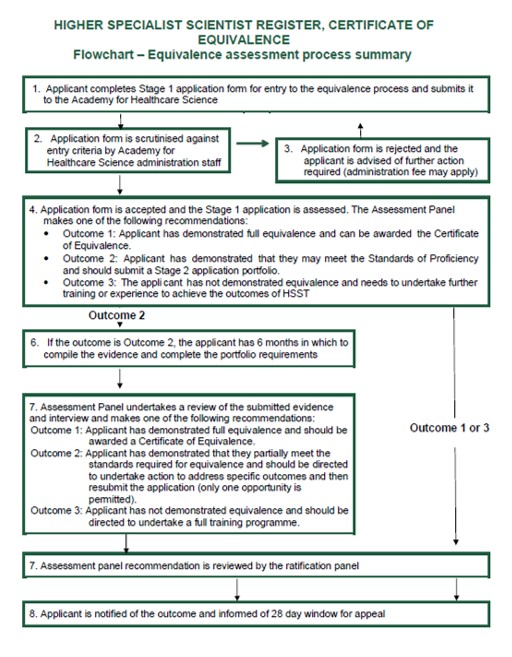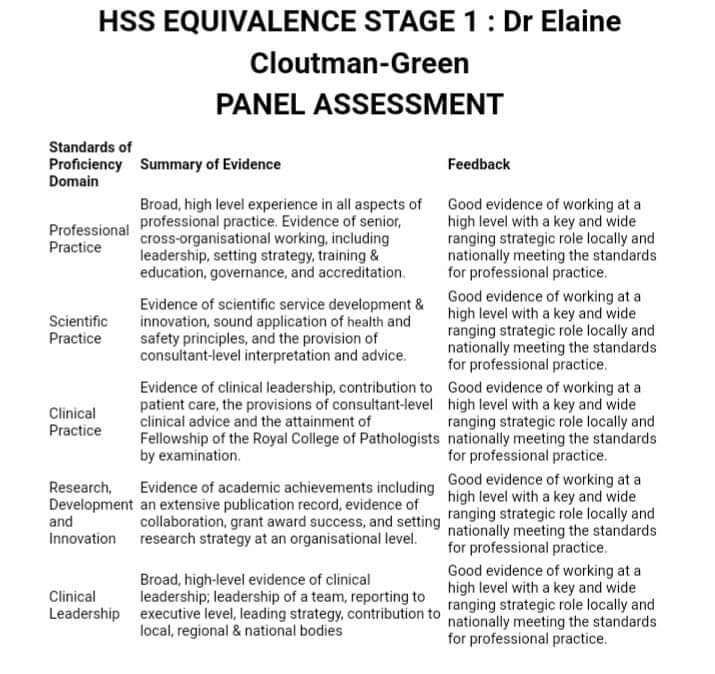Why I Went Through the Equivalence Process and Why I think it’s Important as a Lead Healthcare Scientist to Lead By Example
Yesterday I posted for Healthcare Science Week 2021 with some tips about applying to start your career as a scientist. Today I wanted to post something linked to career progression as a Healthcare Scientist. So todays post is about going through the equivalence process with the Academy of Healthcare Science (AHCS). I know that this one may be a bit

contentious, I know this because when I announced I’d been through the process on Twitter I got some push back and interesting discussion. That said I still think it’s important and so I want to take you through not only how I went about it but my thought process as to why.
The equivalence process enables individuals who have gone through different progression routes to achieve progression similar to the end points reached by the structured routes offered by the National School of Healthcare Science (Scientific Training Programme (STP) and Higher Specialist Scientific Training Programme (HSST)). Equivalence can be undertaken for either programme and requires you to demonstrate that you have covered both the breadth of scope and qualifications contained in the curriculum that is involved in the structured centrally delivered programme. Once you’ve gone through the equivalence process you can then register on the AHCS register, in the same way as a programme graduate.

For people like myself who attained a PhD and FRCPath by examination prior to the introduction to these structured programmes there is no requirement for us to demonstrate equivalence to the HSST. For many people in a similar position to myself they are also already in Consultant posts, and so the participation in this process is perceived as costly, with little added value.
So why do I think it is important for me as a senior leader and Lead Healthcare Scientist to go through this process and put my money where my mouth is:
- I want to understand the process so that I can support my workforce when they are submitting for the equivalence process themselves.
- I want to lead by example. These structured programmes are what my future workforce are going to be going through. I owe it them to understand the breadth requirements of the curriculum so that I can be a better advisor.
- I want to demonstrate the value of the register. Although HSST equivalence is not currently required it is likely to become an increasing requirement in posts that are being created (I’ve seen one recently). In order to maximise flexibility for my workforce to apply for posts in the future I think it’s important to get on the register early and show why it might be important for their futures.
- STP equivalence is much more embedded and within my workforce I’m working hard with the team to raise awareness and support for this route. It would feel hypocritical of me (as Lead Healthcare Scientist) to be pushing the importance of considering undertaking this process and not have been prepared to engage with it myself.
- As well as being a Lead Healthcare Scientist I am also a Healthcare Scientist Training Advocate for National Institute of Health Research. As part of the development of training plans for doctoral and clinical lectureship fellowships then the role of equivalence plays an important part for those who will go through the non-standard route that I undertook. By having been through the process I can help in guiding applicants in what items their clinical training programme will need to contain.
- Finally, I did this for me. I wanted to show that I am competitive for posts, that I have the skills required. I am not in a consultant post and will therefore potentially be competing for posts against people now exiting the training programme. I found the process of putting together the information and reflecting about my career against a set of standardised benchmarks incredibly useful. It is so useful to identify gaps that you may not have recognised, or reassuring that you have covered everything and you are good to go.
So What Is the Process for Applying for Equivalence
My experience is of putting together the Stage 1 application pack, which consists of the following:
- A completed Stage 1 Summary Mapping Template – this is basically linking your structure CV to the standards to show that you have met them all
- Job description and person specification
- A structured curriculum vitae (CV) – this is 1500 words that outlines your qualifications, job role, experience and anything else you need to demonstrate you meet the standards
- Two appropriate professional references
- Qualification certificates
- I also added some additional information to the end of my structured CV that included: a publication list and grant funding received, as well as a list of committee and guidance groups I am a member of
It took me a while to look at the standards and reflect on content, but I have to admit the bit that took me longest was finding all the documentation (certificates, driving license etc) in order to scan them in and submit them. The other bit that took time was getting the references as we all know how busy everyone is.
The whole application is online and you upload each part and you have it. It gives you a progress bar so you know how close you are to completion. I didn’t know anyone else who had completed it and at that point there were in fact no microbiologists on the HSS register to talk to about it, so I just put things together based on intuition and what I would like to see if I were assessing. Mostly this was about leading the reader and making the information easy to find, as well as making sure that in the mapping document it was clear that all the competencies had been covered. I’ve included mine below, not because I’m claiming it is the most amazing document ever, but so that you don’t have to start from scratch like I did in terms of your thinking.
Structured CV for HSST Equivalance

Once I had submitted I waited. I was fortunate enough to get an Outcome 1 (see above) feedback as shown below:

After which I paid my £50 and became the first microbiologist on the ACHS HSS register.
Overall the process was pretty simple and straight forward. The thing that took the longest was the thinking ahead of putting it together. I found it useful to have a list of the competencies and then listed all the different things that I could use as evidence against them. I could then focus my thinking and my CPD review on areas where I didn’t have so many items mapped.
Equivalence will not be for everyone, but as the profession of Healthcare Science enters a much needed phase where training and careers become more structured then it will be needed. I hope that by having gone through this process I have gained the skills and knowledge to support others, as well demonstrating leadership in an area that I feel is important. So I would encourage you to review: Is its right for you? Is it right for your workforce? and What’s stopping you?
All opinions on this blog are my own

